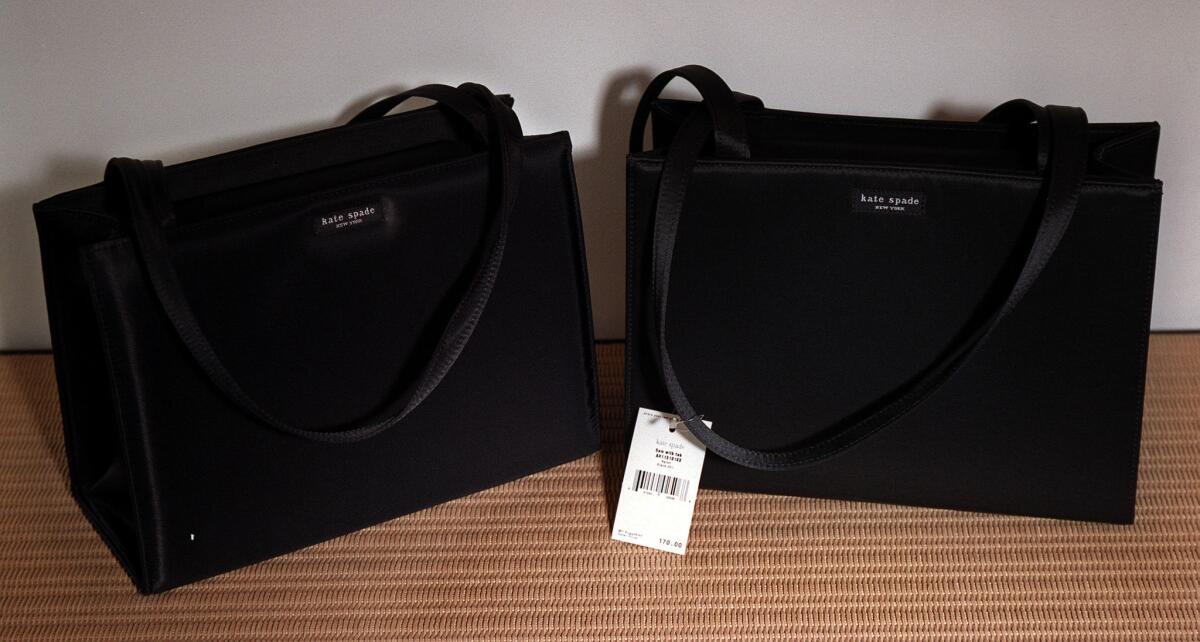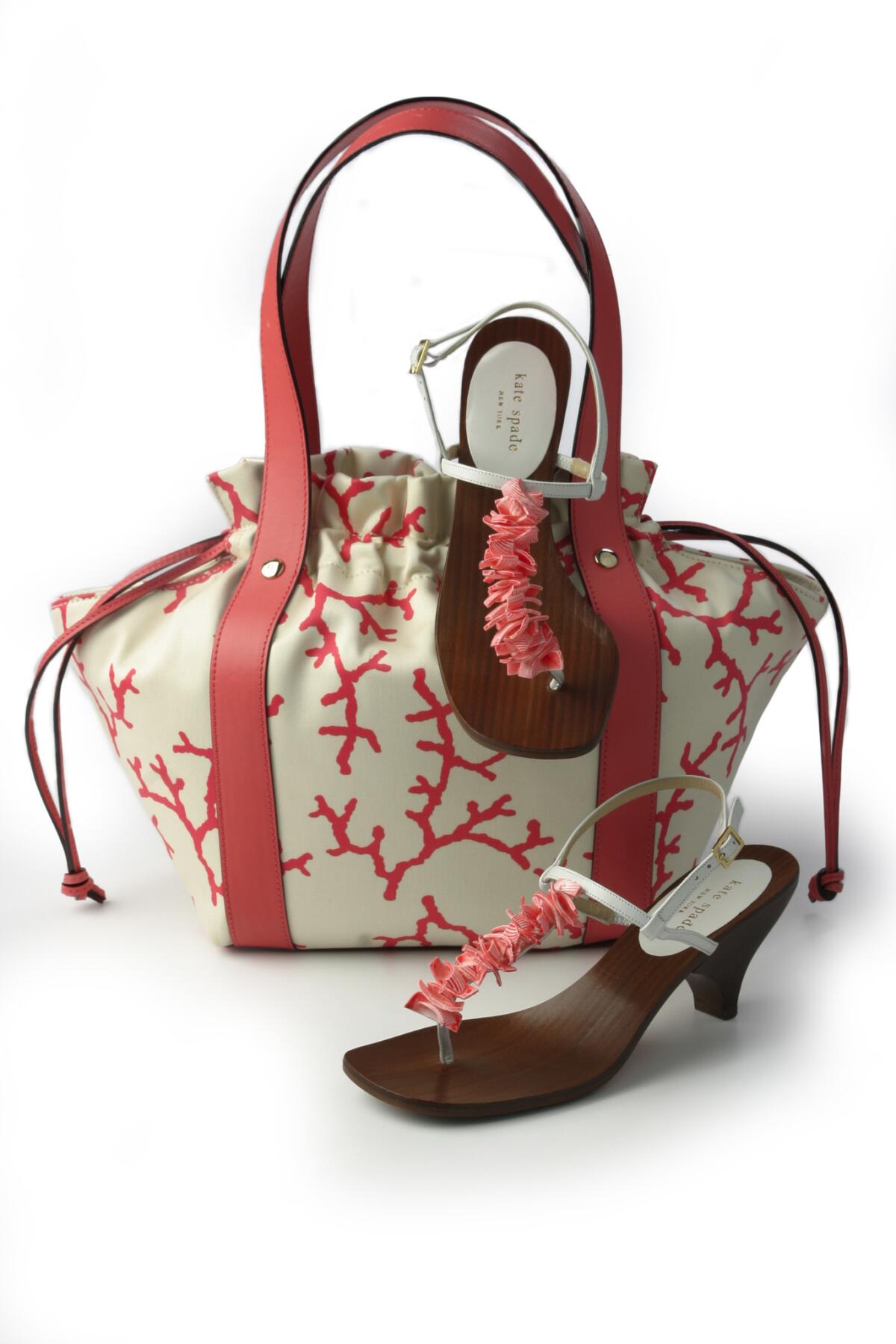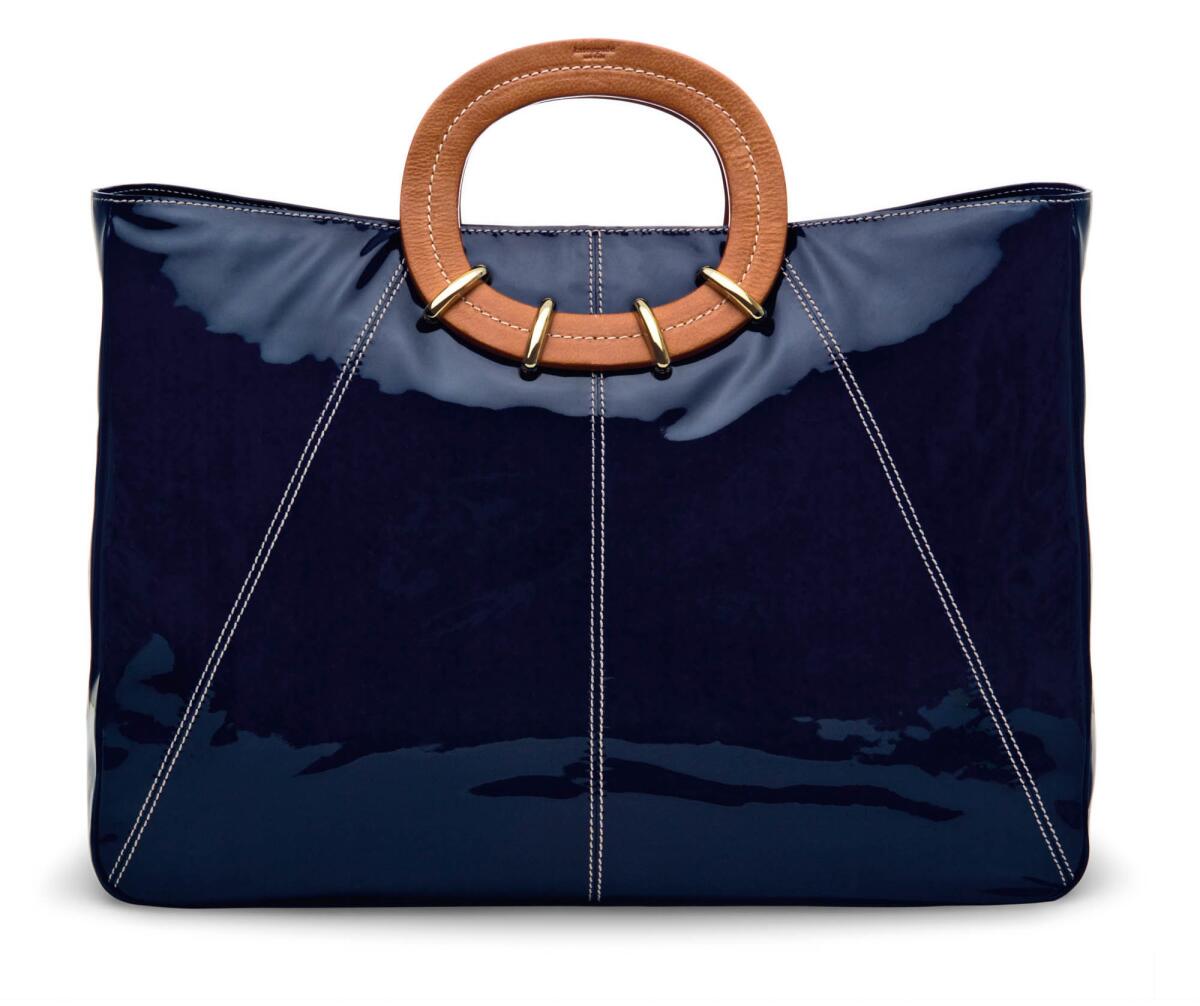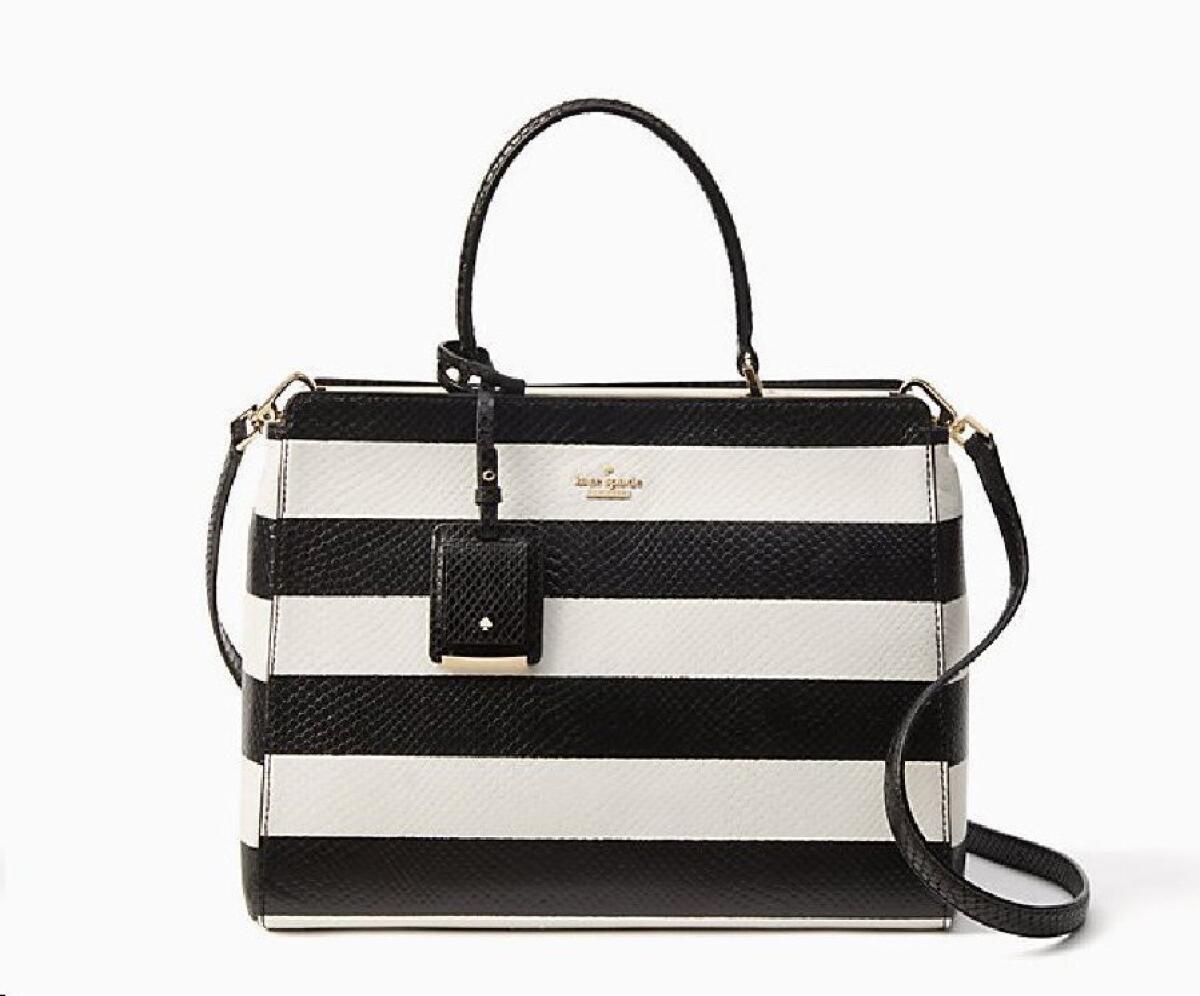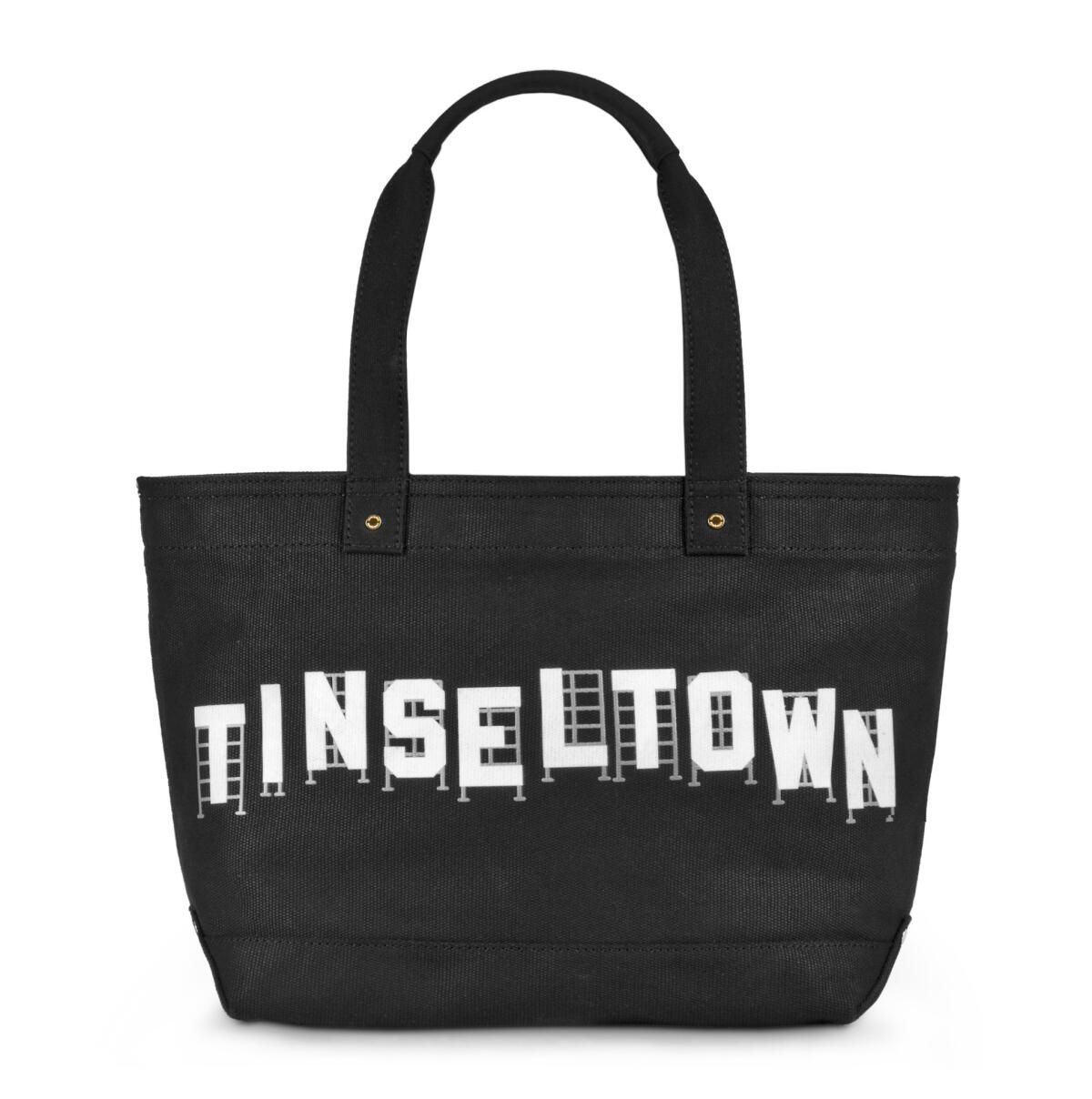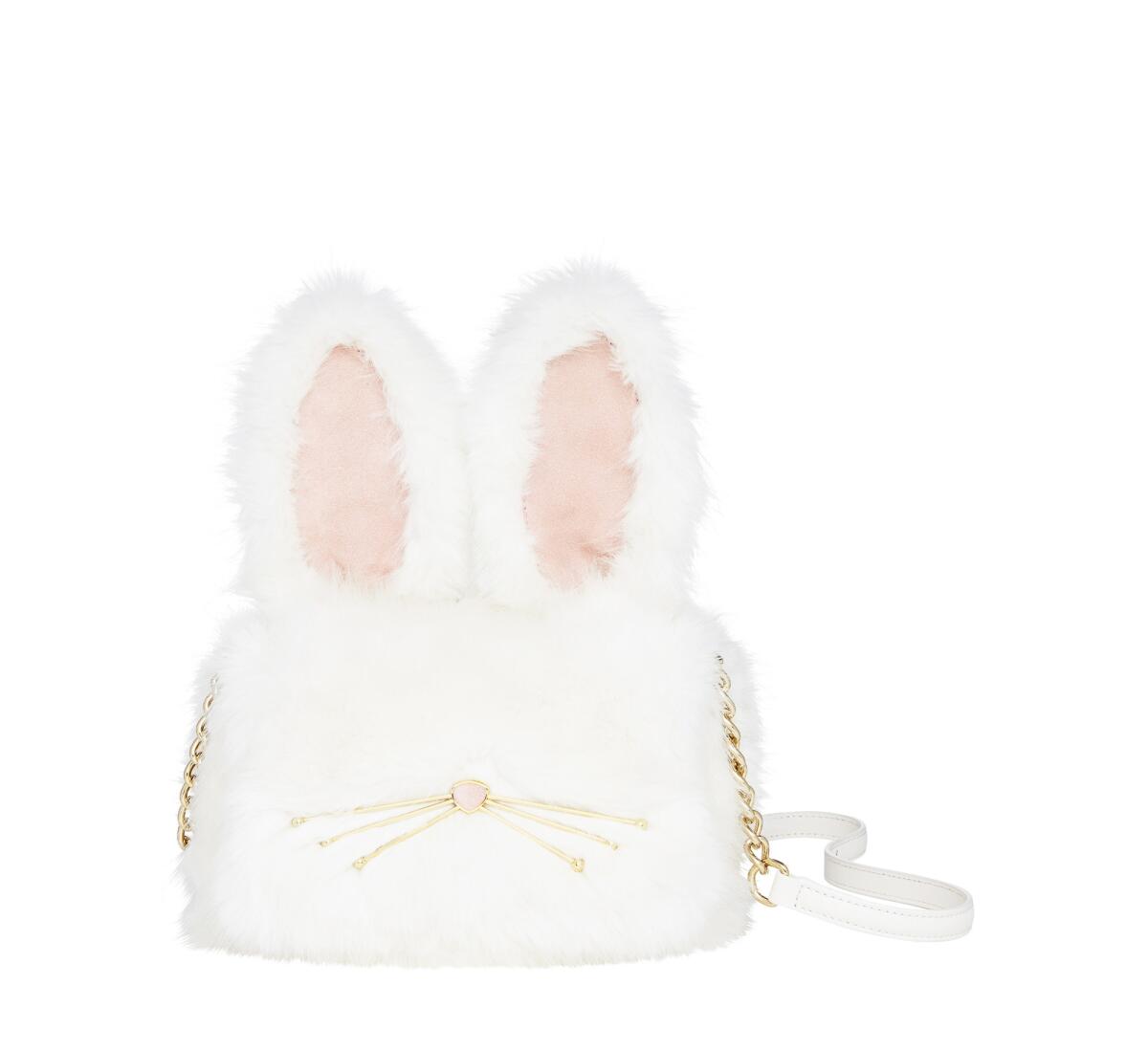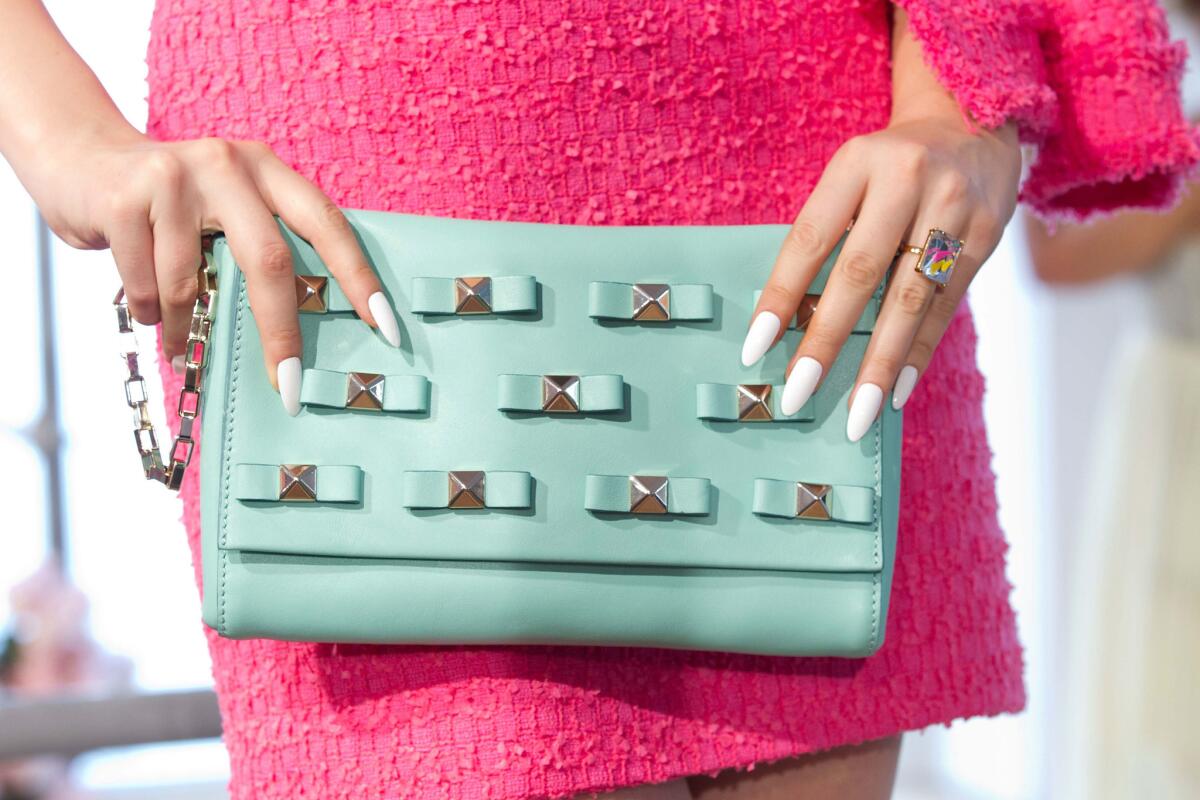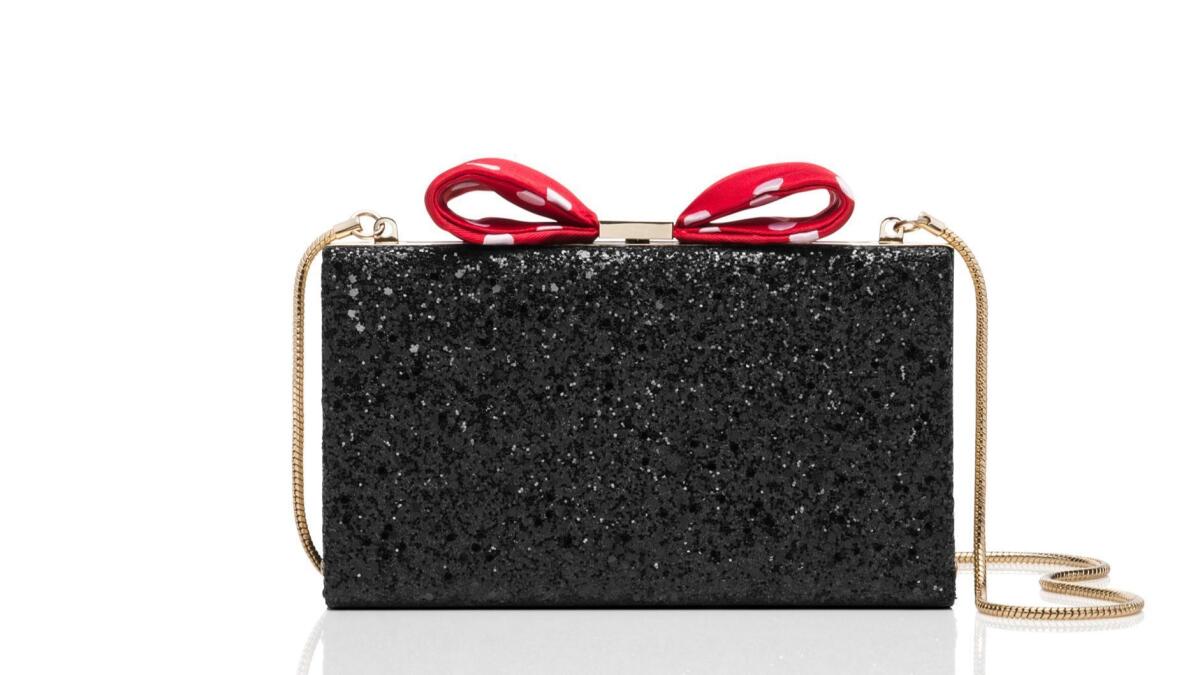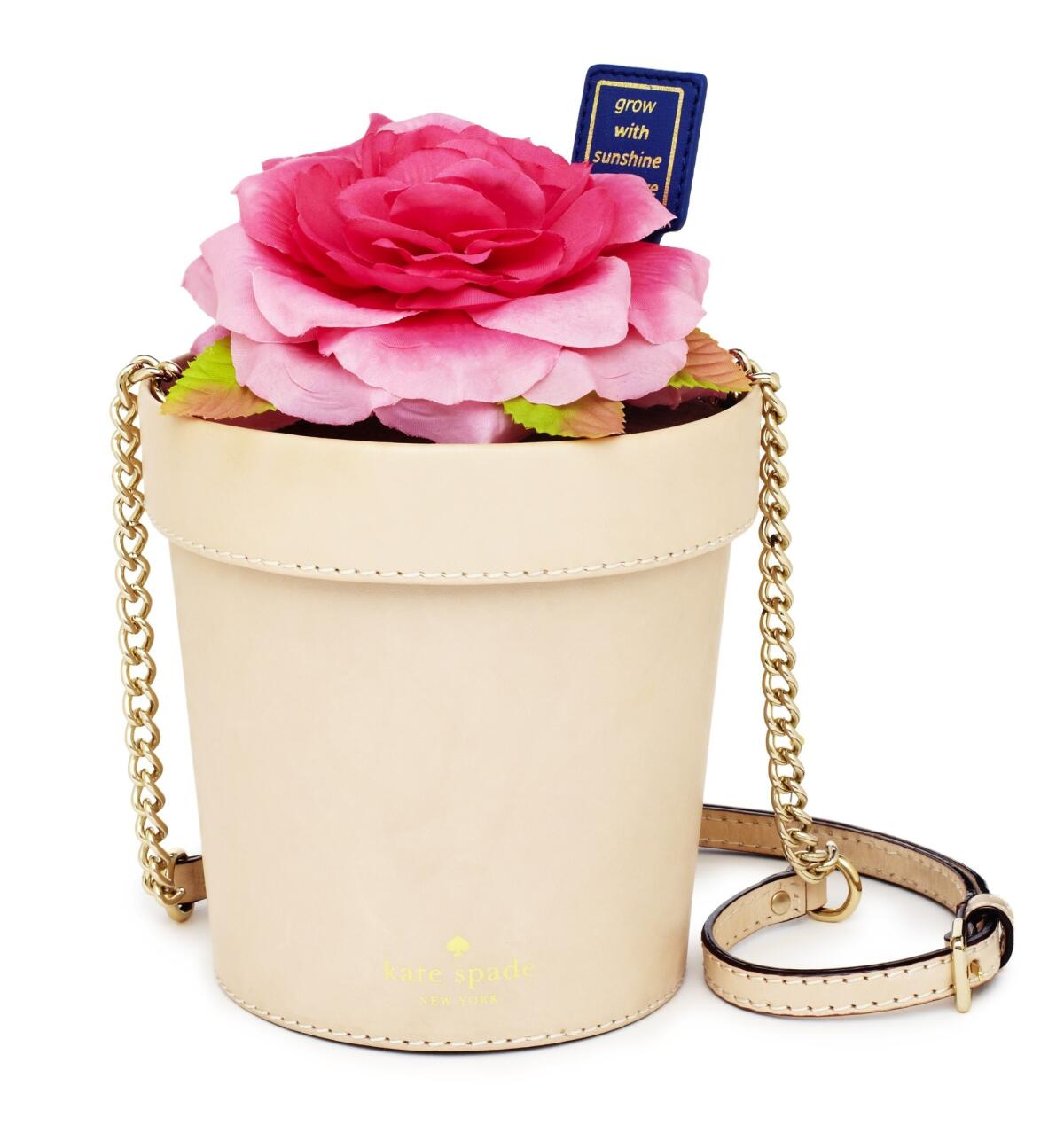Looking back on the designs and styles of Kate Spade and the brand — and signature bag — she created
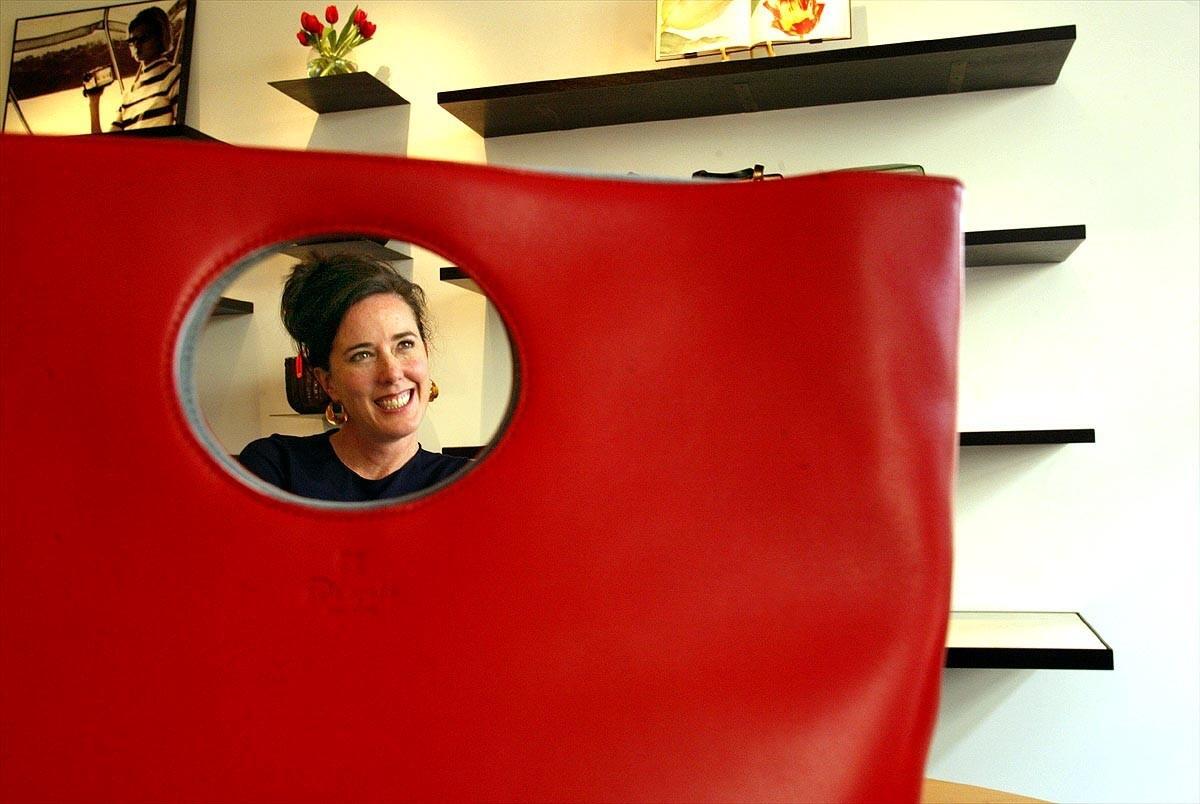
- Share via
Her mission was to bring the perfect handbag to the masses. And Kate Brosnahan and her business partner and the man she married, Andy Spade, did just that after starting the Kate Spade label in 1993. Initially, there were six handbag silhouettes, and the bags featured the brand’s name on the outside. They weren’t fussy in nature but were designed to be utilitarian, sleek and colorful — and, of course, affordable, especially to urban women who wanted to carry a designer bag but couldn’t spend thousands for one.
Designer Kate Spade, 55, died Tuesday in New York from an apparent suicide. Out of all her early designs, one handbag, in particular, is often credited with catapulting the line to “It status.” That $200 bag, the Sam, was a black, boxy and simple bag initially made from waterproof nylon, and carrying one became a rite of passage for many elite, young career women. (To celebrate its 25th anniversary, Kate Spade New York released updated versions of the Sam bag this year.)
Spade left her self-named brand in 2007 after Neiman Marcus Group, which owned a controlling stake in the label, sold it the year prior to Liz Claiborne Inc. In 2017, the brand was bought for $2.4 billion by Coach Inc., which is now called Tapestry Inc., also the parent company of Coach and Stuart Weitzman. Kate Spade New York, however, has continued to build on its founder’s legacy for designer handbags in the $200-$500 range.

Kate Spade, whose handbags were essential accessories for urban women, dies at 55 »
The evolution of the label’s bags has moved into a more playful and daring space. The current collection includes designs that feature pineapples, flamingos and bright beachy colors that complement the motto, “Live colorfully.”
Here’s a look at some of the designs from the Kate Spade label over the years.
